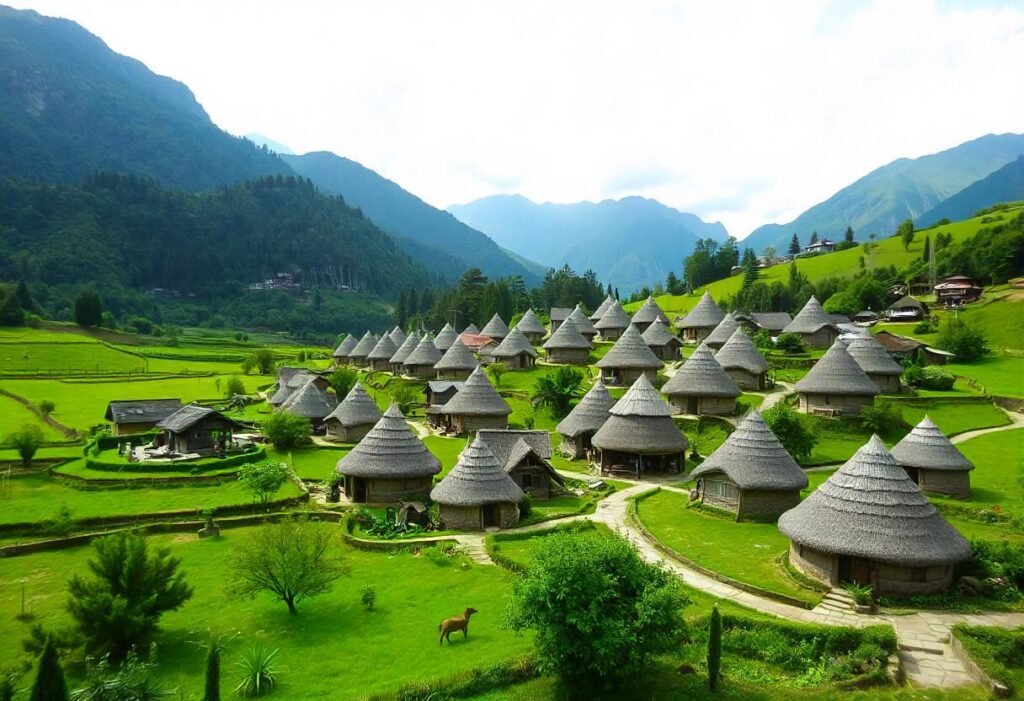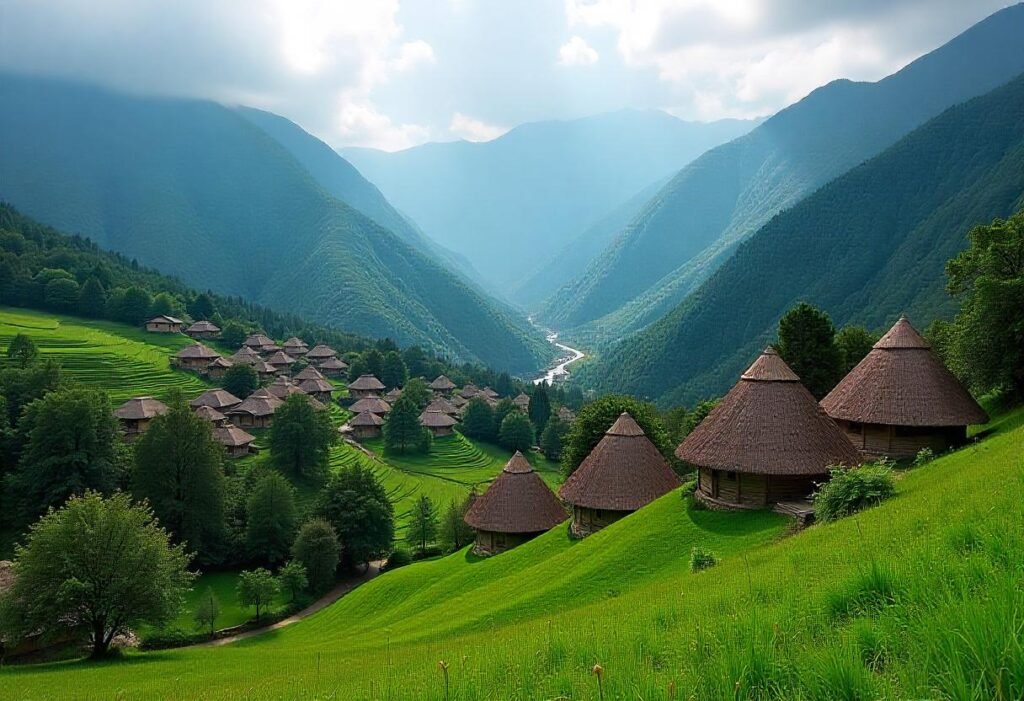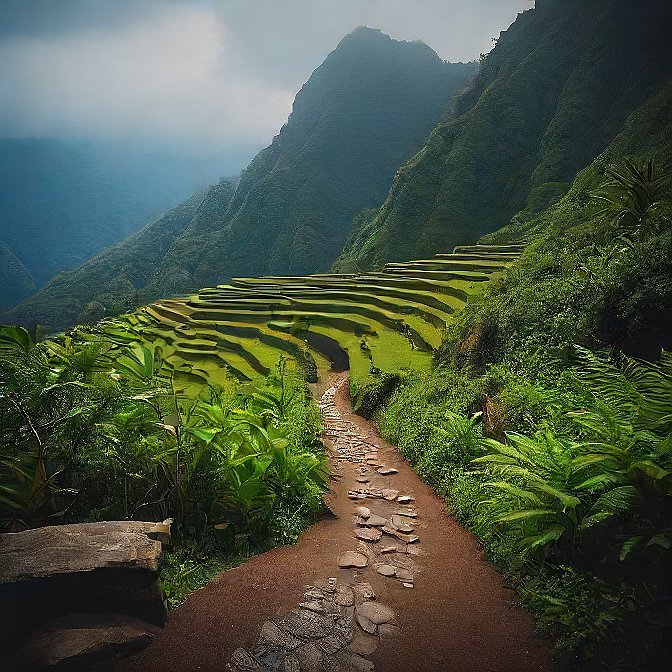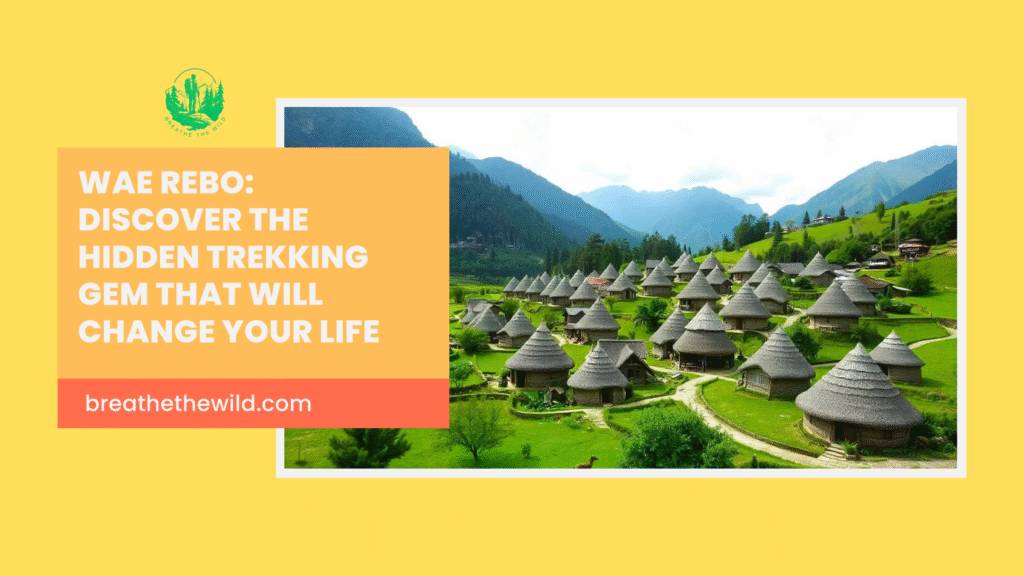Table of Contents
Introduction

Wae Reb is a small hill village in the heart of the green, misty mountains of Flores in Indonesia. A hidden paradise of trekkers, a trip to Wae Reb is not merely a trek but a life-changing experience into a world that stands timeless. This small village, located in an inaccessible area and home of the famous traditional cone-shaped houses named Mbaru Niang, is not yet exposed to the modern world and practically serves as a muse to old and traditional culture and community spirit.
It is not merely trekking to the Wae Rebo through the spectacular natural beauty; surrounded by the luxuriant nature, it is also about experiencing the lively culture that has been in existence for many centuries. Be a nature lover, culture lover, or even a different way of seeking a travel experience, this is one place you will never forget in your life; Wae Rebo is a destination that will turn your world upside down.
What Is Wae Rebo? Step Into Indonesia’s Timeless Village
Wae Rebo is a secluded, authentic village located at a very high altitude in Manggarai Highlands, Flores, Indonesia. A village known to host famous Mbaru Niang-shaped houses of thatched material, constructed using methods centuries old, it is an example of living, breathing indigenous culture and community. Wae Rebo can be treated not as a destination, but as a living heritage site with the presence of the ancient traditions. To a traveler, it provides a touch of reality of a lifestyle that seems to have no touch of time, and as such, it becomes an essential trip to take as a trekking destination by nature lovers and culture enthusiasts.
Where Is Wae Rebo? How to Reach This Hidden Paradise
Deep in the rugged highlands of Flores, Wae Rebo has no access whatsoever except accessible on foot via beautiful trekking routes. The majority of the visitors start their trip with one of the nearby towns, such as Labuan Bajo or Ruteng, which are the most common entry points. To reach Wae Rebo, most commonly takes an intermingling of car or motorbike ride, and then a several-hour hike through thick forests and green hills. Amazing scenery and glimpses of traditional village life are some of the magnificent views awaiting trekkers along the way, and as such, the trek is part of the entire adventure.
The Wae Rebo Trek: What to Expect on This Life-Changing Journey
The hike to Wae Rebo is around 7km (or about 4.3miles) each way and is only around 3 to 5 hours one way, depending on how fast you walk, as well as how fit you are. The track takes us into juicy tropical forests, flowing rivers, and terraced mountains, and their beauty is always there, as is fresh air. During the hike, the hikers walk through smaller traditional villages where they will find local hospitality and culture. It is a moderate hike, and most able-bodied travelers will be able to participate, but unfamiliarity with pacing and preparation is a hindrance to achieving all that this particular trek has to offer without resulting in exhaustion.
Living History: Experience Wae Rebo’s Ancient Culture and Traditions
Wae Rebo not only serves as a destination but also as a living museum that brings the rich Indonesian cultural heritage. The iconic Mbaru Niang homes that make up the entire village, with all of their homes comprising only natural materials such as bamboo and alang-alang grass, demonstrate the mastery of architectural development that is passed on through the generations. Tourists will gain a unique experience to bathe in the customs of the locals, having not only a chance to join the activities of the day, or watch centuries-old ceremonies and rituals.
The hospitality and friendliness of the Wae Rebo people produce a distinct environment in which the real cultural interchange happens, and so, each trip to the Wae Rebo becomes a memorable, individual experience.
Best Time to Visit Wae Rebo for Clear Trails and Vibrant Culture
The dry season that runs between May and September is the best time to trek to Wae Rebo. The months are less risky and have clearer trails as well as conducive weather to explore the outdoors. It would also be better to visit during the dry season, which also increases your likelihood of witnessing colorful cultural festivals and other community activities as people turn out to be more active and friendly during this season. On the contrary, the rainy season (October through April) may pose difficulties to the trek because of wet tracks and poor visibility.
Check Out: Mount Kerinci: Conquer Indonesia’s Most Challenging and Stunning Peak Today.
What to Pack for the Wae Rebo Trek: Essential Gear for an Unforgettable Experience

In order to make your adventure in Wae Rebo a complete experience, make sure to carry some necessities such as good quality hiking boots to help you out during hikes and a lightweight rain jacket to guard against the rain as well and a repellent to guard against mosquitoes. They will have to take spectacular scenery and traditions; it is impractical without a good-quality camera. Also, since hiking can get you on rough terrain, trekking poles will assist in navigation and striking a balance on such difficult terrain.
On the other hand, sources of power are essential, and a portable charger will keep you online as long as you keep trekking. Do not forget to take something to wear in case the weather and trail change.
Eco-Friendly Trekking: How to Respect Wae Rebo’s Environment and Community
Sustainable tourism becomes the most important in Wae Rebo in ensuring the maintenance of the pristine environment and rich culture. Other guidelines that people can observe at this site are Leave No Trace, where people are expected to conserve the waste as well as not interfere with the natural environment. One way to do this is to support community-based tourism projects so that the families in the area have a direct gain from your presence. Privacy and respect of the villagers and their customs are far enough in ensuring that there is a fine line between tradition and tourism. Trekking is a responsible way of ensuring that future generation gets to enjoy the presence of this hidden gem.
Living History: Experience Wae Rebo’s Ancient Culture and Traditions
Wae Rebo is not a destination, and is a museum of the rich cultural heritage of Indonesia itself. Traditional architecture with skills that have been passed through the generations also demonstrates through the village signature Mbaru Niang houses that are made entirely using natural materials, inclusive of bamboo and alang-alang grass.
The tourists can have an experience that they will never have again, and that is being able to partake in local culture, including how they go about daily tasks, and being able to witness ancient ceremonies and rituals. It is the friendly and welcoming nature of the Wae Rebo community that opens a special place, an authentic cultural encounter, where everyone feels like getting a unique and personal experience during each visit.
Best Time to Visit Wae Rebo for Clear Trails and Vibrant Culture
The most favorable period to hike to Wae Rebo is the dry season, which majorly falls between May and September. The months involved are friendlier to outdoor adventures because the weather is more favourable, in addition to trails being less destroyed and plagued by dangerous activities. Travelling during the dry season would also increase your probability of knowing colourful cultural and communal festivals and events since residents are very active and friendly during the dry season. The rainy season (October to April), on the other hand, and can make the trek uncomfortable as the ground is muddy and visibility is poor.
What to Pack for the Wae Rebo Trek: Essential Gear for an Unforgettable Experience
You need to bring along the basic necessities such as a pair of good hiking shoes, a waterproof wind jacket, and some insect repellent against mosquitoes in order to maximize your Wae Rebo experience. Cultural moments and breathtaking landscapes have to be photographed with a good-quality camera. Moreover, balance on uneven surfaces during a trek can be ensured with trekking poles, and portable chargers can keep your devices charged during the trip. It has been stated to pack lightly, but be ready for weather and trail conditions, variable.
Eco-Friendly Trekking: How to Respect Wae Rebo’s Environment and Community

Wae Rebo has had a pristine environment and a rich culture, which can be maintained through sustainable tourism. In relation to Leave No Trace, visitors are expected to produce minimal waste, refrain from trampling the natural environment. Peddling community-based tourism projects can aid in making sure that local families are benefiting directly because of your visit. Taking into consideration the privacy and the traditions of the villagers can go a long way in creating a fine balance between tourism and tradition. The best thing we can do by trekking is to preserve such a hidden gem to be experienced and enjoyed by our posterity.
Conclusion
Wae Rebo will not only be a trek for ordinary people to look forward to; it will also be a life-changing experience trying to get inside the true nature of Flores and its culture. The hike pushes you mentally and gives back to you back a sense of immersion in a village that has not changed over time, and its beautiful scenery and the warmth of the local people. According to this, the trip to Wae Rebo gives a rare opportunity to feel oneself with nature and even with the ancient tradition, and this place is to be visited by adventurous tourists not along the beatless tourist routes.
You will learn to plan your journey so that it coincides with the dry season, pack smart, and enjoy the local environment and respect the local customs to have memories to last a lifetime. Make sure you discover other nearby treasures such as Cunca Wulang Waterfall and the rice terraces of Ruteng to make your amazing Flores experience complete.
For more info: Click Here.
FAQs
1. What makes the Wae Rebo trek that hard?
The journey to Wae Rebo is not so difficult because, on average, it takes 3-4 hours one way. It entails mountainous trekking in thick forest and crossing rivers. Basic fitness is desired, and he pace can be scaled to beginners, though.
2. Do I have to hire a guide to Sim trek into Wae Rebo?
Yes, you won’t go wrong by taking a local guide; indeed, you will need it. Guides do much more than simply keep you out of danger; they also contribute to your experience with cultural information and act in order to assist the local community.
3. May I stay at Wae Rebo overnight?
Absolutely! Spending a night in local traditional Mbaru Niang houses will provide you with a unique opportunity to feel local life, taste delicious local food, and enjoy the calm rhythm of village life, and your visit will become that immersive.



